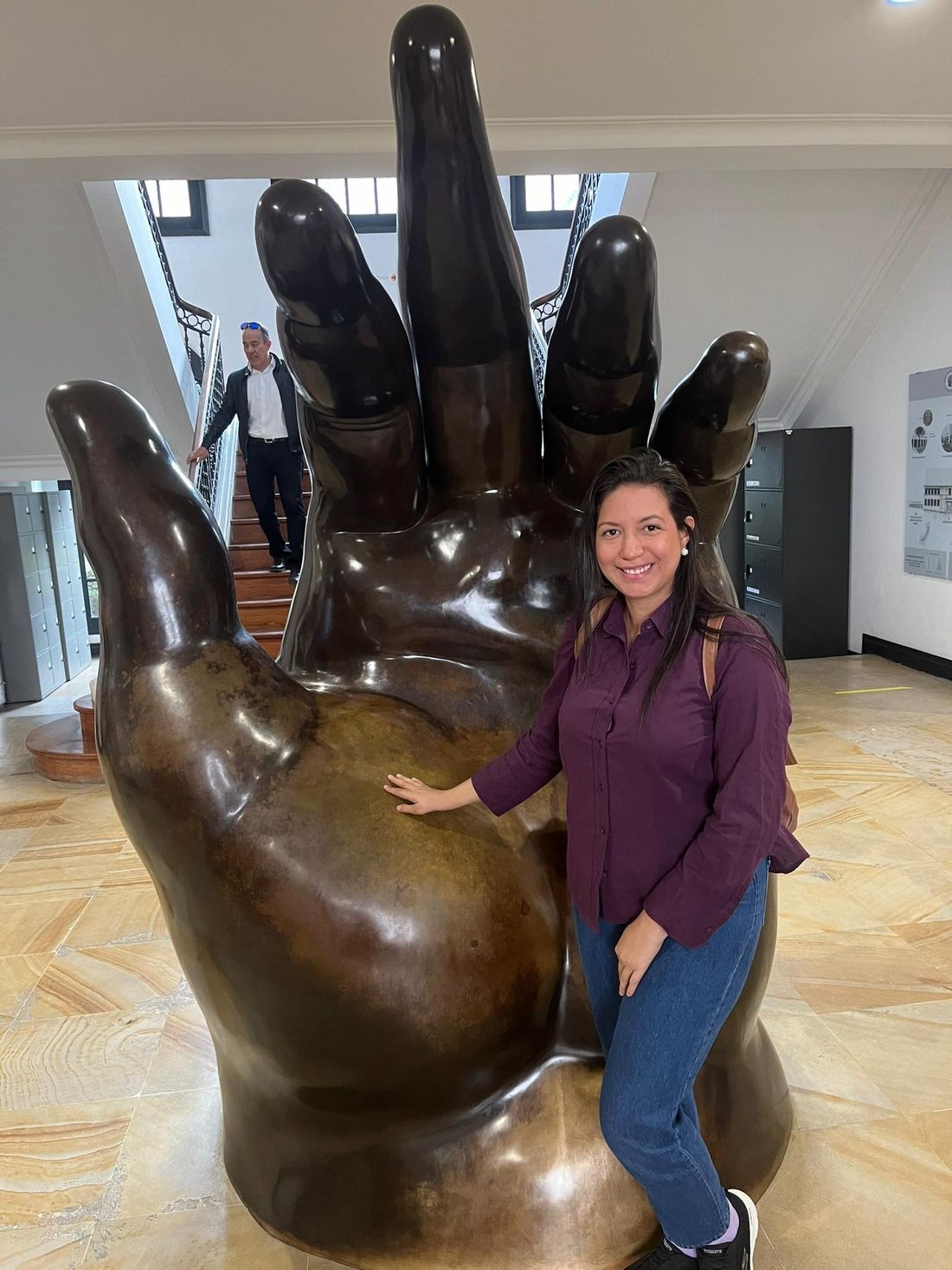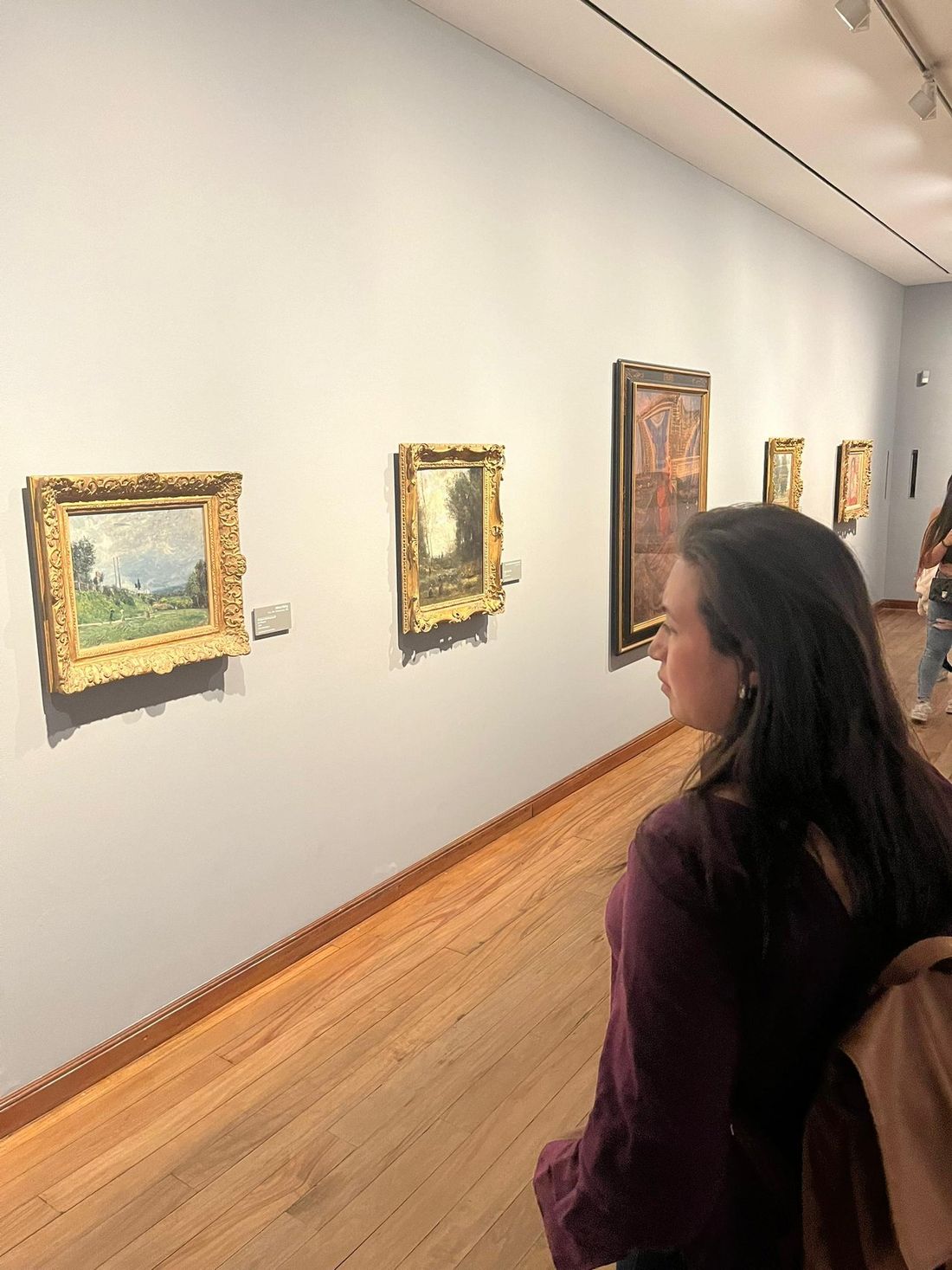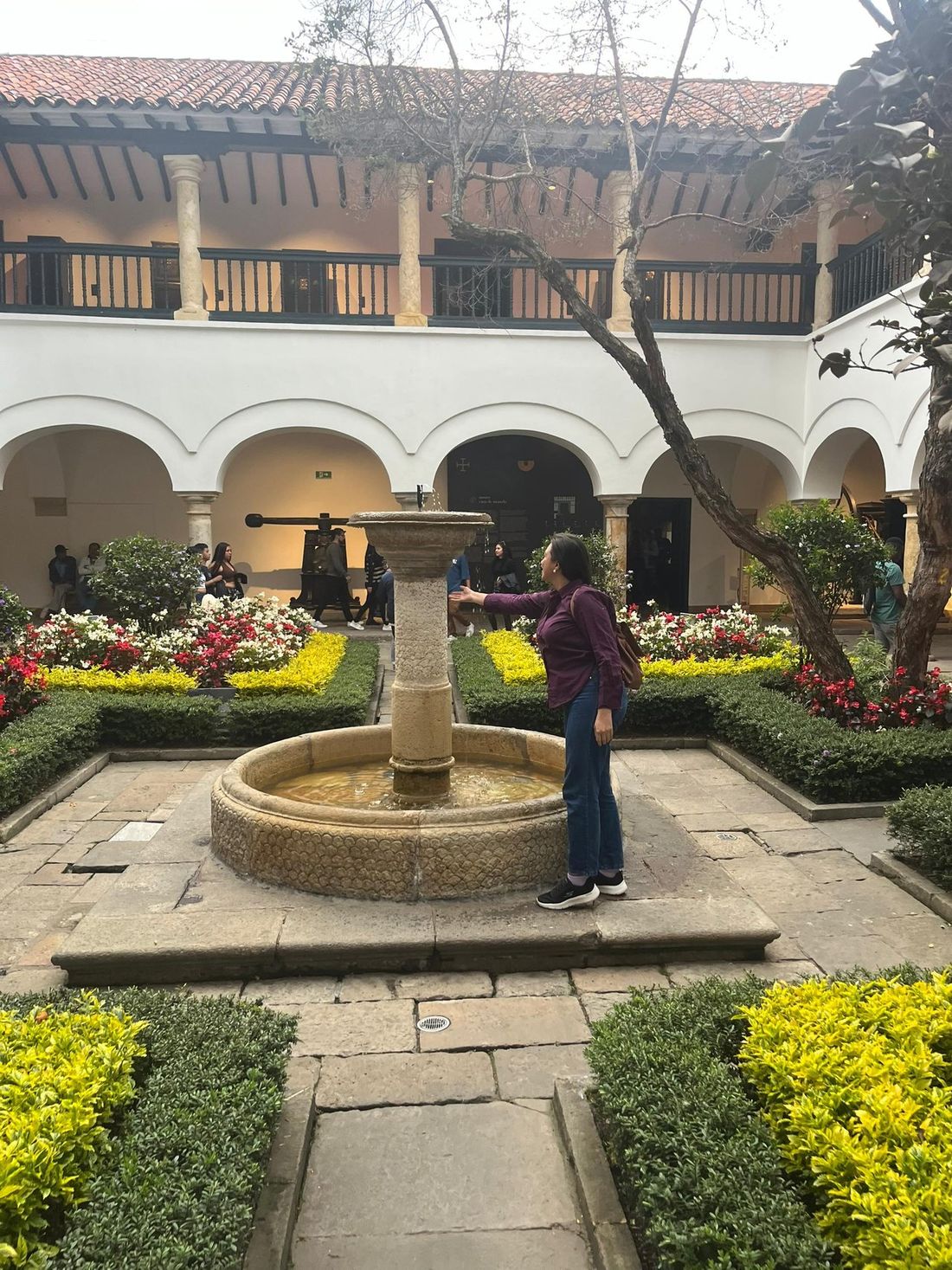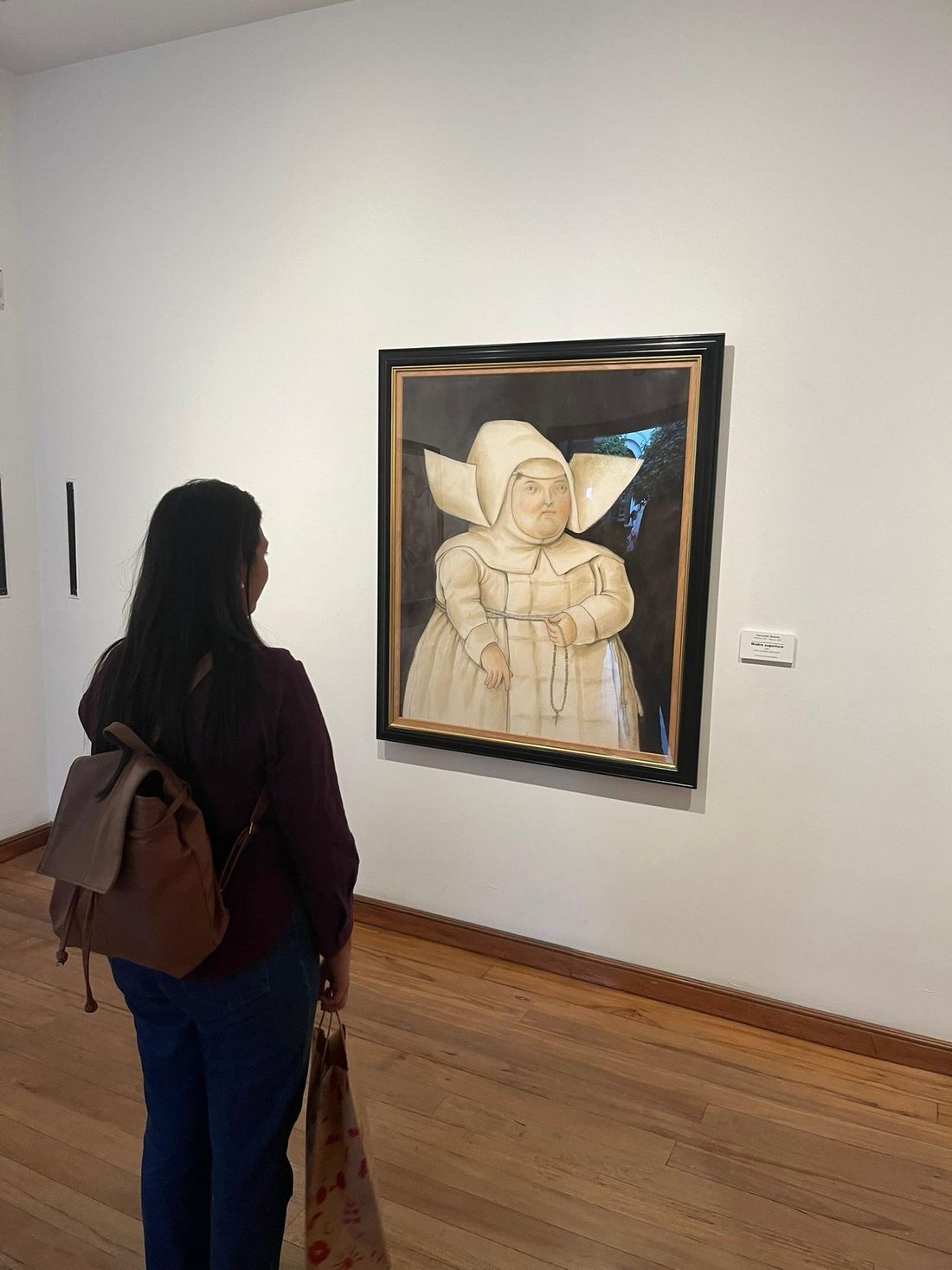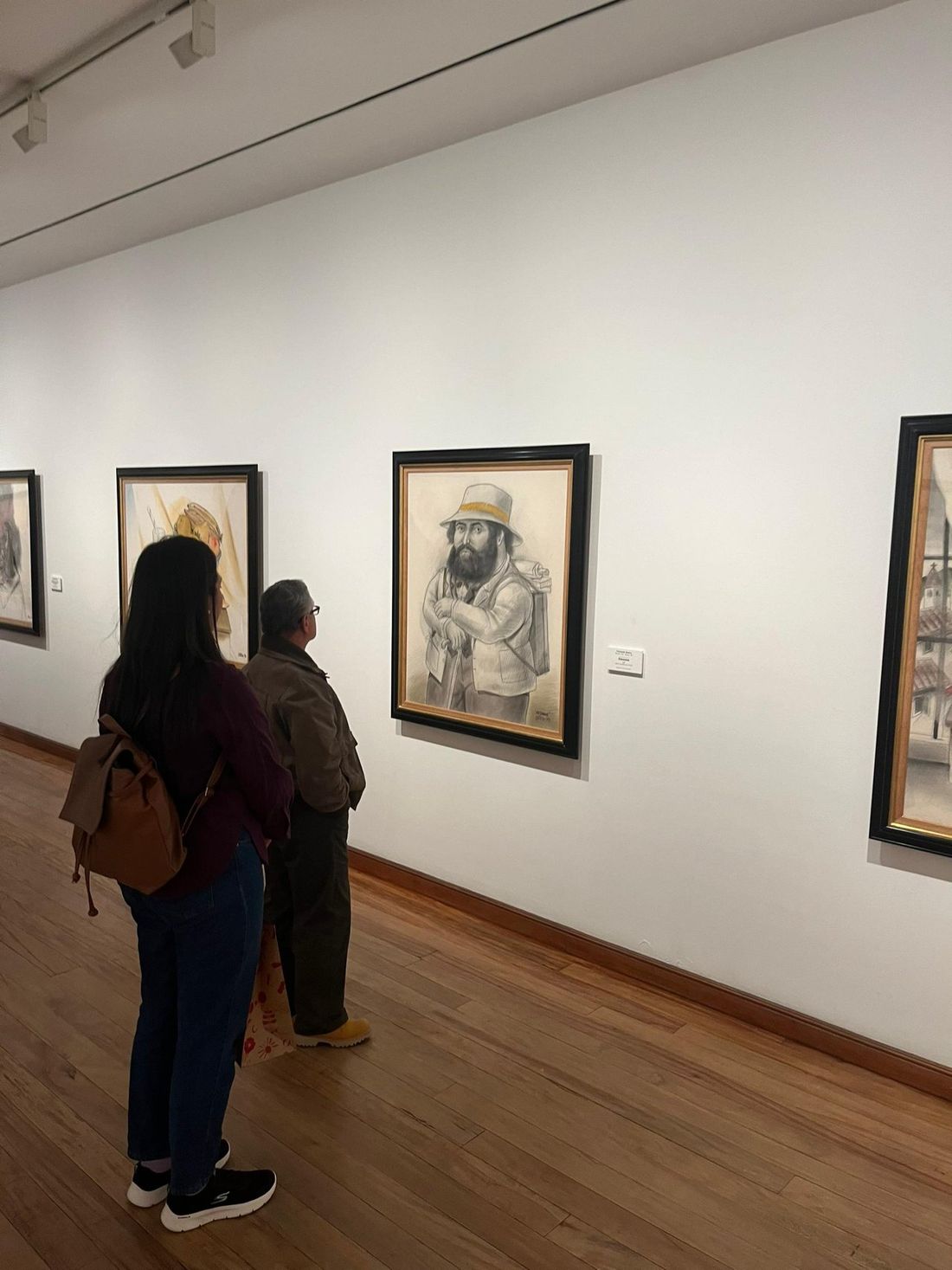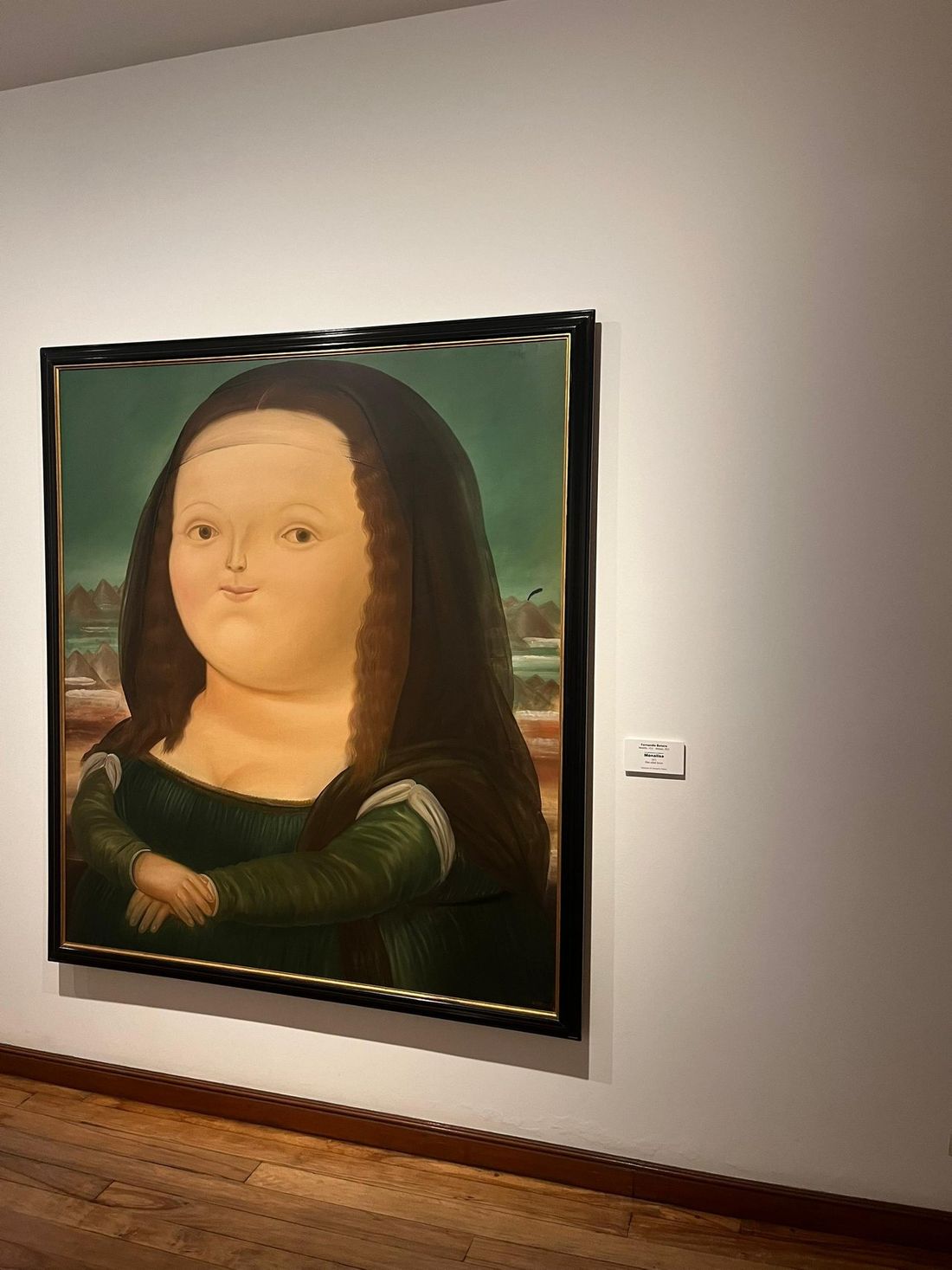I recently had the opportunity to visit the Botero Museum in Bogota or the “cultural city” of Colombia as it is also called. There we decided to walk and get into the heart of the city, where we marveled and gaped at so much wonder, history, art and culture.
Hello fellow travelers, today I want to tell you about Bogota, the vibrant city of the Andes, hides among its cobblestone streets an artistic treasure that captivates locals and foreigners alike: The Botero Museum. A beautiful place that was born as a tribute to the work of the renowned Colombian sculptor and painter Fernando Botero and that as soon as you arrive in Bogota they say “If you come to Bogota and do not go to the Botero Museum, then you did not come”, so the place has become a must for those who visit the city.
For me it was my first time in the place, so I decided to walk slowly through the streets of Candelaria, until I reached this large house where the Botero Museum operates and you can admire works by many artists, but I confess that my inner child was petrified specifically in front of the work of Jean-Baptiste-Camille Corot. And it is that Venezuelans use the word “coroto” when we refer to something thanks to the works of this artist and there was the author of the corotos in front of me, but that is a story for another post.
The first thing that strikes the eye when entering the museum is the exuberance of the forms. The voluptuous and rounded figures, characteristic of Botero's style, take over every corner, creating a festive and lively atmosphere. The permanent collection, made up of more than 120 works by the artist, invites visitors on a journey through his artistic evolution, from his earliest works to his most recent creations.
But the Botero Museum is not limited to showing the work of its namesake. In its rooms we also find a select collection of universal art, donated by Botero himself. Works by masters such as Picasso, Renoir, Matisse and Giacometti coexist in harmony with the creations of the Colombian artist, thus enriching the visitor's experience.
Being there was simply moving, and I'm not just talking about the art, but also the gardens of the place, which were exuberant, elegant, bizarre, calm. Without a doubt I was transported to the colonial times and I enjoyed every space of silence, art and colors, where the ceilings were high and the houses with huge spaces.
Being there was simply moving, and I am not only talking about the art, but also the gardens of the place, which were exuberant, elegant, bizarre, calm. Without a doubt I was transported to the colonial times and I enjoyed every space of silence, art and colors, where the ceilings were high and the houses with huge spaces.
The entrance to the Botero Museum was free and it is a place that is connected to other museums, so if you go there to enjoy art, culture and history, there you will be able to enjoy the exhibitions of each place for hours.
SPANISH (click here!)
Hace poco tuve la oportunidad de vistar el Museo de Botero, en Bogotá o la “ciudad cultural” de Colombia como también la llaman. Allí decidimos caminar y adentrarnos en el corazón de la ciudad, donde nos maravillamos y nos quedamos boquiabiertos entre tanta maravilla, historia, arte y cultura.
Hola amigos viajeros hoy quiero comentarles sobre Bogotá, la vibrante ciudad de los Andes, esconde entre sus calles empedradas un tesoro artístico que cautiva a locales y extranjeros por igual: El Museo Botero. Un lugar bellísimo que nació como un homenaje a la obra del reconocido escultor y pintor colombiano Fernando Botero y que apenas llegas a Bogotá te dicen “Si vienes a Bogotá y no vas al Museo de Botero, entonces no viniste”, así que el lugar se ha convertido en un referente obligado para quienes visitan la ciudad.
Para mí era mi primera vez en el lugar, así que decidí caminar despacio por las calles de la Candelaria, hasta llegar a esta casona donde funciona el Museo de Botero y se pueden admirar obras de muchos artistas, pero confieso que mi niña interior se quedó petrificada específicamente frente a la obra de Jean-Baptiste-Camille Corot. Y es que los venezolanos utilizamos la palabra “coroto” cuando hacemos referencia a una cosa gracias a las obras de este artista y allí estaba el autor de los corotos frente a mí, pero eso es una historia para otro post.
Lo primero que llama la atención al adentrarse en el museo es la exuberancia de las formas. Las figuras voluptuosas y redondeadas, características del estilo de Botero, se apoderan de cada rincón, creando un ambiente festivo y lleno de vida. La colección permanente, compuesta por más de 120 obras del artista, invita a un recorrido por su evolución artística, desde sus primeros trabajos hasta sus creaciones más recientes.
Pero el Museo Botero no se limita a mostrar la obra de su homónimo. En sus salas también encontramos una selecta colección de arte universal, donada por el propio Botero. Obras de maestros como Picasso, Renoir, Matisse y Giacometti conviven en armonía con las creaciones del artista colombiano, enriqueciendo así la experiencia del visitante.
Estar ahí simplemente conmovedor y no lo digo solo por el arte, también eran los jardines del lugar que eran exuberantes, elegantes, estrambóticos, calmados. Sin duda yo me trasladé, me transporté a la época de la colonia y me disfruté cada espacio de silencio, arte y colores, donde los techos eran altos y las casas con espacios inmensos.
La entrada al Museo de Botero fue gratuita y es un lugar que está conectado con otros museos, así que si vas en plan de disfrutar del arte, cultura e historia, allí te vas a dar vida, porque por horas podrás disfrutar de las exposiciones de cada lugar.
Las fotos y contenido aquí compartido con ustedes son de mi autoría. Las fotos fueron tomadas con mi teléfono Redmi Xiaomi 9. Y la traducción al inglés fue realizada con DeepL
The photos and content here shared with you are my authorship. The photos were taken with my Redmi Xiaomi 9 phone. And the English translation was done with DeepL.
Posted Using InLeo Alpha
![The Botero Museum a space of time to get lost in art and culture [ENG// ESP]](https://img.truvvle.com/?src=aHR0cHM6Ly9pbWFnZXMuaGl2ZS5ibG9nL3AvM1JUZDRpdVdENk5VZUpFbjVBVnJKVW95YXRGcUJxZmNDSmkxTjdVaXhSNGcyS1BLTjd3OE5wWktHUzVDd1RDblhidFBmYkxDeXJueHgzSFRuNmFjdDRkNE42SHpnbjdQdmJRN21ORW5OeENETHdvM29RMmNiTXp1UVhIWHFRZWpmQUJKZDFoWHlOdFRWbzhmZmdHY1dXeEYyRzFhcTJwa1F6UnVzSjdQNENnUWNOLz9mb3JtYXQ9bWF0Y2gmd2lkdGg9MjAwMCZoZWlnaHQ9ODAwJm1vZGU9Y292ZXI&width=3840)

